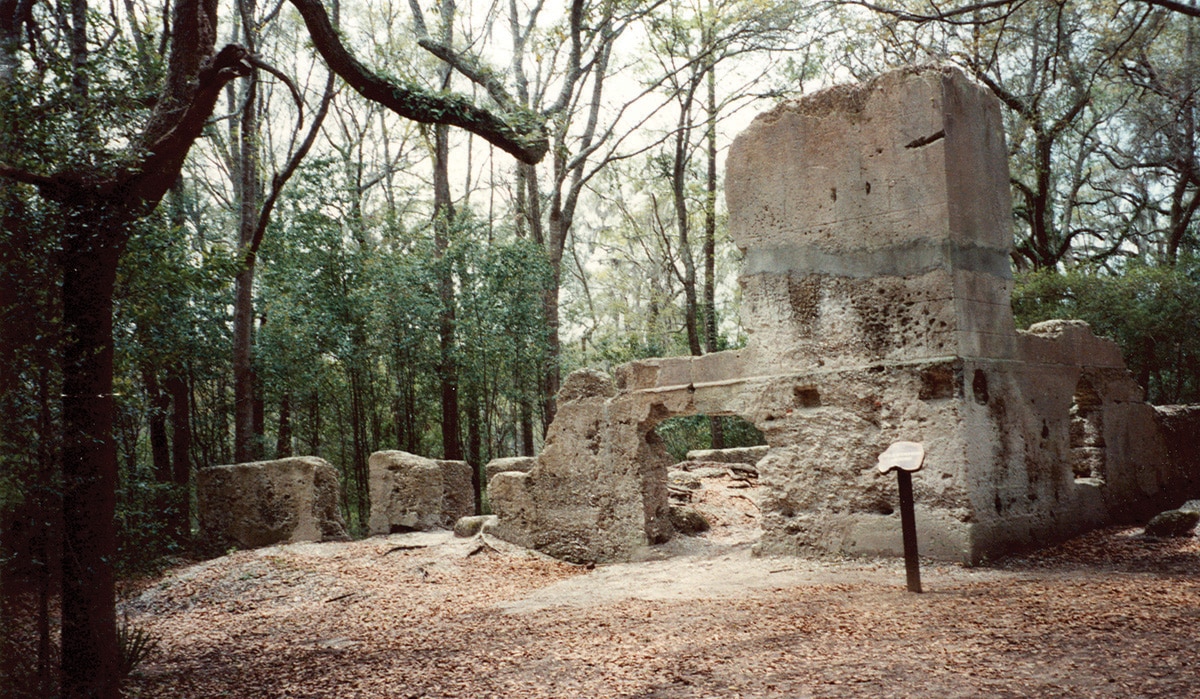
 Add to My Favourites
Add to My Favourites

The Stoney-Baynard Ruins tells a colorful legend of Hilton Head Island’s Stoney and Baynard families. Let your imagination take you back in time, as you walk the very space that cotton planters, slaves, and Confederate and Union troops walked centuries ago.
Tabby
The ruins are a living testament to an inventive masonry technique called ‘tabby,’ popular in the Lowcountry during the 18th and 19th centuries. It was made by burning crushed oyster shells to make lime, which was then mixed with sand, whole shells and water.
History
Cotton planter Captain John ‘Saucy Jack’ Stoney built Braddock’s Point Plantation between 1793 and 1810. The original home was built facing the Calibogue Sound in order to capture the much-appreciated breeze off the water, and although it only stands 40-feet wide by 46-feet long today, it is thought that the home originally stood much larger and included a large wrap-around porch.
The estate remained in the Stoney family until around 1837 when planter William E. Baynard acquired the plantation. A popular island legend says the Stoney owner lost the property in a poker game to Baynard in 1840.
During the Civil War the plantation was raided by the Union forces and made into their Island headquarters. Shortly later, the home burned down.
What You Will See
As you approach the tabby ruins on a well-marked pathway, you will come upon the main house. Looking away from the main house, you will see the outlines of two smaller buildings to the east, assumed to be either slave quarters or storehouses for William Baynard’s Sea Island cotton. The lone block of tabby, across from the main hall, reveals evidence of a chimney, indicating an earlier house or the overseer’s house.
The ruins are listed on the National Register of Historic Sites. You can explore them on your own or sign up for a guided tour through the Nature Center in Harbour Town (843-671-4386).
The ruins are located in the six-acre Baynard Ruins Park off Plantation Drive in The Sea Pines Resort (map).

 Add to My Favourites
Add to My Favourites




